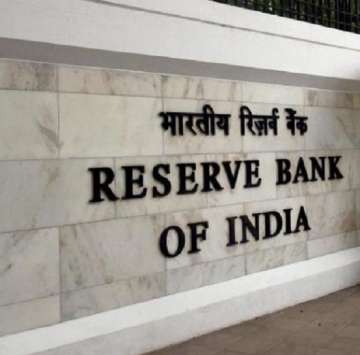RTGS: Here's how it works
The Reserve Bank of India has extended timings for customer transactions through Real Time Gross Settlement (RTGS). The timings for customer transactions (initial cut-off) in RTGS have been extended from 4:30 pm to 6:00 pm.
The Reserve Bank of India has extended timings for customer transactions through Real Time Gross Settlement (RTGS). The timings for customer transactions (initial cut-off) in RTGS have been extended from 4:30 pm to 6:00 pm.
Here is all you need to know about RTGS:
1. What is RTGS?
'RTGS' stands for Real Time Gross Settlement. It is a system where there is continuous and real-time settlement of fund-transfers, individually on a transaction by transaction basis (without netting). 'Real Time' means the processing of instructions at the time they are received; 'Gross Settlement' means that the settlement of funds transfer instructions occurs individually.
2. What are the advantages of RTGS?
- Considering that the funds settlement takes place in the books of the Reserve Bank of India, the payments are final and irrevocable.
- RTGS offers many advantages over the other modes of funds transfer as it is a safe and secure system for funds transfer. RTGS transactions / transfers have no amount cap.
- The system is available on all days when most bank branches are functioning, including Saturdays.
- There is real time transfer of funds to the beneficiary account.
- The remitter need not use a physical cheque or a demand draft.
- The beneficiary need not visit a bank branch for depositing the paper instruments.
- The beneficiary need not be apprehensive about loss / theft of physical instruments or the likelihood of fraudulent encashment thereof.
- Remitter can initiate the remittances from his / her home / place of work using internet banking, if his / her bank offers such service.
- The transaction charges have been capped by RBI.
- The transaction has legal backing.
3. How is the processing of RTGS different from that of National Electronic Funds Transfer (NEFT) System?
NEFT is an electronic fund transfer system in which the transactions received up to a particular time are processed in batches. Contrary to this, in RTGS, the transactions are processed continuously on a transaction by transaction basis throughout the RTGS business hours.
4. Is there any minimum / maximum amount stipulation for RTGS transactions?
The RTGS system is primarily meant for large value transactions. The minimum amount to be remitted through RTGS is ₹2,00,000/- with no upper or maximum ceiling.
5. Is there any processing charges / service charges for RTGS transactions?
With a view to rationalize the service charges levied by banks for offering funds transfer through RTGS system, a broad framework of charges has been mandated as under:
a) Inward transactions – Free, no charge to be levied.
b) Outward transactions – ₹2,00,000/- to 5,00,000/- : not exceeding ₹30/-;
Above ₹5,00,000/- : not exceeding ₹55/-.
Within the maximum charge there is a component which depends on the time of day when the transaction is initiated. Banks may decide to charge a lower rate but cannot charge more than the rates prescribed by RBI.
6. What care should be taken while originating a RTGS transaction?
The following should be ensured while putting through a funds transfer transaction using RTGS –
Originating and destination bank branches are part of the RTGS network.
Beneficiary details such as beneficiary name, account number and account type, name and IFSC of the beneficiary bank branch should be available with the remitter.
Extreme care should be exercised in providing the account number of the beneficiary, as, in the course of processing RTGS transactions, the credit will be given to the customer’s account solely based on the account number provided in the RTGS remittance instruction / message.
What is the time taken for effecting funds transfer from one account to another through RTGS?
Under normal circumstances, the beneficiary branches are expected to receive the funds in real time as soon as funds are transferred by the remitting bank. The beneficiary bank has to credit the beneficiary's account within 30 minutes of receiving the funds transfer message.
7. Can a transaction be originated to draw (receive) funds from another account?
No. RTGS is a credit-push system i.e., transactions can be originated by the payer / remitter / sender only to pay / transfer / remit funds to a beneficiary.
8. Can an RTGS transaction be tracked?
While the customers do not have the facility to track the transaction, the RBI has recently announced the feature of positive confirmation in an RTGS transaction. Under this, the remitting bank would receive a message from RBI (through the beneficiary bank) that the money has been credited to the beneficiary bank / customer account.
9. Is a customer eligible to get compensation for delay in returning the payment?
In case of any delay in returning the failed payment, the originating customer is eligible to receive compensation at current repo rate plus 2%.
10. Whom can a customer contact, in case of non-credit or delay in credit to the beneficiary account?
The customer can contact his / her bank / branch if there is an issue of delay / non-credit to the beneficiary account. If the issue is not resolved satisfactorily, complaint may be lodged at email or by post at following address giving UTR number and details of the issue -
The Chief General Manager
Customer Education and Protection Department
1st Floor, Amar Building, Fort
Reserve Bank of India
SBS Road, Fort
Mumbai, 400 001
(Info source: Reserve Bank of India website)
